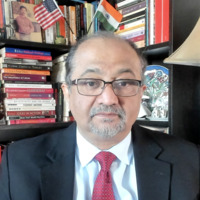La relation à l’apprendre à l’université
Recherches sociologiques et anthropologiques, Dec 31, 2011
Le texte se propose d’examiner la qualite de l’apprentissage des etudiants a l’universite comme u... more Le texte se propose d’examiner la qualite de l’apprentissage des etudiants a l’universite comme une dimension de leur performance academique. Une enquete realisee aupres de 115 etudiants inscrits en sciences humaines et sociales et en lettres de cinq universites de la region parisienne entre 2005 et 2008 s’est interessee a leur point de vue relatif a leur carriere d’apprenant et au sens donne au fait d’aller a l’universite et d’y apprendre. Deux outils ont ete mobilises par cette enquete : les entretiens et le suivi longitudinal d’un groupe d’etudiants pendant deux a trois ans. Les donnees de cette enquete permettent d’identifier quatre perspectives d’apprentissage (comprehensive, performante, minimaliste et desimpliquante) representant les variations de la relation a l’apprendre dans le contexte universitaire en France. Se focalisant sur la socialisation et l’affiliation intellectuelle des etudiants a l’universite, l’enquete tente egalement d’examiner l’impact des facteurs biographiques, sociaux et contextuels sur leur devenir universitaire dans une perspective sociologique.











Uploads
Papers by saeed paivandi
The chapters in this book discourses how the higher education is governed in a particular region and setup. It debates in what way and how the governance of higher education is influenced by the legislative framework, the features of the institutions, funding mechanism, the varied stakeholders and their further autonomy as well as accountability.
The book provides an original and broad look at higher education governance across 11 countries, contributing to comparative higher education governance literature on Canada, Greece, Spain, Argentina, Mexico, France, Poland, Japan, India, Vietnam and Malaysia.
Cet ouvrage rend compte des résultats d’une enquête qualitative sur les relations différenciées à l’acte d’apprendre des étudiants à l’université, en mobilisant pour cette analyse un nombre important de recherches internationales et françaises.
Le propos est pensé à la confluence de trois registres. L’auteur envisage d’abord la place centrale de la question du sens dans la relation à l’apprendre chez les étudiants. Le second registre est relatif au fait de concevoir l’acte d’apprendre en tant qu’acte situé dans un contexte pédagogique et au sein d’une matrice disciplinaire qui exercent une influence indéniable dans la mobilisation intellectuelle des étudiants. Enfin, le troisième registre prend en compte la qualité de leur apprentissage. Cette distinction s’explique par les spécificités et les enjeux de l’apprentissage universitaire, qui doit préparer les étudiants à confronter les défis d’un monde en mutation permanente.
C’est dans l’optique d’une sociologie de l’éducation que l’auteur se propose d’analyser l’expérience universitaire des jeunes et leur engagement vis-à-vis de l’acte d’apprendre. Il a cherché à saisir de l’intérieur le point de vue de l’étudiant, en réalisant des entretiens dans cinq universités françaises. Un portait bouleversant du monde étudiant qui est tout sauf homogène
This book ‘Private Higher Education Across Nations’ provides an original and broad look at private higher education across thirteen countries written by many of the leading experts in higher education who share their inquiry of contemporary developments in private higher education and the implications they see for present and future strategy. It contributes to comparative private higher education literature through its chapters on Canada, Argentina, Poland, Greece, Brazil, France, Colombia, Japan, China, India, Mexico, Malaysia and Pakistan. The country chapters focuses on history of higher education (private and public), structure of higher education, current status of higher education, factors responsible for private sector growth, forms and types of private higher education, status of private higher education, and role of the State (in terms of control, regulation and governance).
The book addresses the allusions of the private sector development across the nations, with regard to its responsiveness to quality, financing, access, and equity. It will be a valuable information base for research scholars, policy makers, administrators, faculty and students’ intent on comprehending the extensive scope of factors that are currently modeling and altering private higher education landscape.
This book entitled “Higher Education Across Nations” provides a comparative higher education system literature covering twelve countries. In context of these countries, the book focuses on history of higher education, the structure of higher education, current status of higher education in terms of enrolment, institutions etc. Besides these issues, the chapters also discuss equity, quality assurance, financing and governance issues. The countries covered in the chapters of this book are Canada, Argentina, Brazil, Maghreb region (Tunisia, Morocco and Algeria), Greece, France, Germany, Japan, China, India, Bangladesh and South Africa.
It is widely recognised that higher education promotes social and economic development by enhancing human and technical capabilities of society. Technical change and institutional change are key components of development. Higher education plays an important role in facilitating these changes by incorporating all of the various demographics of the population. In contemporary lifelong-learning framework, higher education provides not only the high-level skills to address labor market demand but also the training essential for skilled manpower. The higher education expansion is a universal phenomenon in which there has been a great enhancement in the number of students. The trend is more tangible in developing nations. With rise in the primary and secondary education graduates, numerous aspire to keep on to acquire a degree. The real incomes in developing countries have also been rising, resulting in higher education within the reach of an increasing number of population segments.
A comparative reading of the various national situations reveals several cross international trends. Higher education is expanding in domestic cases that have been studied in this book. Along with the quantitative development, the higher education has diversified. We are dealing with two different realities across the countries: the first concerns the end of massification of higher education in developed countries and the existence of a quantitative stability of students enrolled in higher education and academic staff. On other hand, we are witnessing amplification of the democratization of higher education in developing countries. The countries that have already gone through the phase of demographic democratization, access to higher education in these countries have democratized during the years 1970-1990. However, quantitative accessibility does not mean access to knowledge and academic success. In other words, the problem is not only to enter the university, but to progressively sustain there. It is for this reason that students success is one of the major challenges of the university. The issue of social inequality in higher education remains another challenge for all the divergent systems.
Globalization has developed a powerful impact on the development of higher education and imposes new challenges for the organization (standards, financing, regulations). Systems of higher education tend to detach from the national models and adopt a more "global" orientation. International rankings of universities also contribute to impose a set of transnational standards and values. Higher education has become increasingly cross-border through the mobility of students and researchers, international exchange programs and joint projects, different forms of partnership between universities. Higher education also contributes to foster globalization in the field of science, culture and training of skilled labor.
The governance of the university is at the heart of various reforms implemented over the last two decades. In order to accommodate and adapt new social and economic realities within the university, the university is pushing more and more towards a kind of efficient and hierarchical governance. In the public higher education, the changing relationship between central and local authorities and the university is a crucial issue. The university is under pressure from policy makers for rationalization of the organization and to adopt a more efficient view of its operatio. This new trade-off sometimes conflict with the traditional values of the universities.
The implementation of quality assurance is one of the latest and most decisive transformations of higher education. Different higher education systems are trying to develop evaluation tools (internal and external) to improve the quality of teaching and research. The quality assurance procedures that were often dependent on national administrative traditions have increasingly tended to converge and led to a set up of common tools and standards. Countries under a centralized system tend to impose a uniform and general model while decentralized systems give greater freedom to universities to set up their own quality assurance system. Despite the development of quality assurance procedures, the concept of quality raises many controversies when it is used to legitimize a particular vision of higher education. There is no international consensus on the goals of higher education and the models diverge in their tradition as well as in social and economic context. Higher education is a complex and multidimensional process and an evaluation cannot account for all its human, social and educational realities.
Funding of higher education is causing a real divergence between countries. Three main models emerge from this comparison: countries with a clear dominance of the public sector with no/low tuition fees. The second model is a hybrid and is characterized by the coexistence of two major sectors (public and private). The tuition fees are relatively high in public university. The third model is characterized by the existence of a relatively strong private sector of higher education and the presence of a smaller public sector. These schemes which are based on academic traditions and historical trajectory of higher education are largely influenced by the social and economic model in each country.
The presence of foreign students has become an important focus for the development of higher education. The number of foreign students in the world has increased four times since 1980s and international mobility in higher education is at the center of national policies. Developed and emerging countries are trying gradually to shift their policy vis-à-vis international students and researchers. Several countries are putting in efforts to attract as many of these students as the presence of international students is considered a crucial aspect of their scientific, academic and economic dynamics. However, the international development of higher education is not a new phenomenon for many countries that have experienced hosting international students a long tradition in their territory. Historically, universities in Europe and Asia had always claimed a cosmopolitan status as pluralistic institution, open to the world, the best place for promoting cultural and scientific contacts.
With expansion of higher education, existing institutions have developed in size, converting themselves into big universities. The expansion has also brought in differentiated new providers in this higher education sector. Despite this expansion the public institutions have felt the financial crisis during last two decades. Different types of institutions both public and private have grown up offering a wide range of vocational and professional programmes parallel to the traditional universities. The modes of financing higher education have also changed over the period of time. Despite this enormous growth in higher education, the issue of equity and quality still remains unaddressed in many countries.
We acknowledge the support and encouragement of contributors, who have written chapters on the country of their specialization. We also thank the reviewers of the chapters. We also thank the publisher for publishing the book within the time frame.
K.M.Joshi Saeed Paivandi
Pour ce faire, les manuels et les programmes scolaires ont été largement révisés, les pratiques religieuses et la propagande politique sont devenues monnaie courante, la formation et le recrutement des enseignants font l’objet d’un contrôle draconien. L’école puritaine s’est rapidement transformée en un royaume d’interdits, une institution répressive, en particulier vis-à-vis des filles.
Plus de vingt cinq ans après l’islamisation du système éducatif les dirigeants de la République islamique rejoignent les chercheurs et l’opinion publique pour avouer ouvertement l’échec de cette expérience singulière. C’est la jeunesse iranienne avec ses conduites rebelles qui a permis de révéler l’inefficacité du « clonage éducatif » recherché par la religion d’Etat. L’ironie de l’histoire est que les nouveaux acteurs sociaux qui revendiquent aujourd’hui une société ouverte et démocratique et une religion tolérante sont formés au sein de cette école endoctrinée et moraliste.